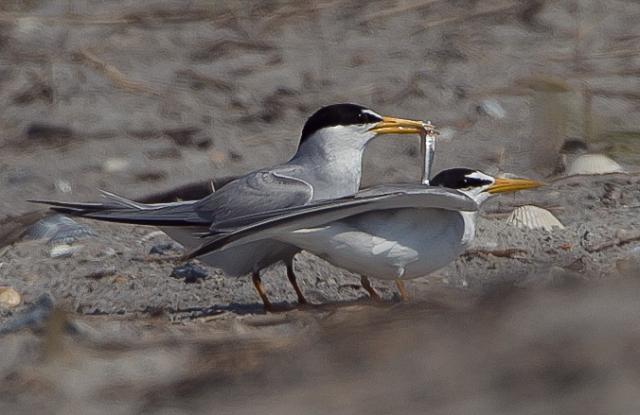For more than 25 years, Audubon North Carolina has managed a network of coastal sites along our state’s coast offering a haven for nesting waterbirds. By protecting the specialized habitats that birds need, coastal birds have a chance to thrive. Read on to learn more about the birds the Coastal Islands Sanctuary Program protects.
With this blog series, we are taking a peak behind the curtain and sharing the secrets of the sanctuaries in North Carolina.
Different birds require different habitats. Audubon’s Coastal Islands Sanctuary Program is providing just that - individual, diverse habitats that offer birds what they need to thrive and raise their young during nesting season. With a safe place to go, free from human disturbance and predators, coastal bird populations are thriving along North Carolina’s coast.
Only a few dozen islands along the North Carolina coast have the right mix of characteristics to support waterbirds. These islands are essential to waterbird conservation in North Carolina because they provide the perfect place where species like the Brown Pelican and Great Egret can raise the next generation.

Setting aside this network of islands dedicated to protecting nesting birds has positioned North Carolina as a vital piece of the conservation puzzle. Recognizing and protecting these islands has long been a part of Audubon’s work.
History of Bird Conservation
Audubon has been a conservation leader in North Carolina with a focus on protecting waterbirds in our state. In the early 1900s, unregulated market hunting threatened birds across the U.S. The early Audubon leader T. Gilbert Pearson worked in North Carolina to educate the public, pass legislation to protect birds, and hired wardens to protect nesting islands.
Two islands in Pamlico Sound became the first Audubon sanctuaries in the state. Though they are gone today, lost to erosion decades ago, descendants of the birds that nested on them still occupy islands that Audubon protects.
In the 1960s and 1970s, conservation attention again focused on nesting islands. Loss of natural nesting sites to development and increasing human disturbance, and the importance of manmade dredge islands, was documented by UNC Wilmington’s Dr. James Parnell and other ornithologists. By the early 1980s an informal sanctuary program with two islands, Battery Island and Striking Island, served as the catalyst for a new kind of conservation plan. The islands would become on-the-ground research labs where conservationists could study waterbirds and apply that knowledge to conservation and develop new habitat management tools to ensure habitats could be sustained over time.
Dr. Parnell and his graduate students served as wardens for Battery and Striking Islands, monitoring and protecting the birds nesting there while conducting thesis research on waterbird biology and ecology.
The Coastal Islands Sanctuary Program formally opened in 1989 with Walker Golder, a student of Dr. Parnell’s, as the manager. In order to develop more comprehensive, statewide protection for waterbirds, Audubon identified important nesting islands and worked to secure their protection.
Today, with a growing network of staff, researchers and conservation partners, Audubon’s Sanctuary Program is working to ensure that waterbird nesting sites in North Carolina are protected.
“Audubon has worked closely with conservation partners throughout the state for decades to coordinate what we do to ensure islands are adequately protected and the birds have high quality habitats they need for nesting,” said Walker Golder, Director of NC Coast and Marshes Program (now with NC Coastal Land Trust).
Why it Works
The goal of the Coastal Sanctuaries Program is to ensure that North Carolina has diverse habitats to support diverse populations of waterbirds. We are continually working to provide places for species to nest—from wading birds, to terns and pelicans, and more.
“If birds don’t have safe places to nest and raise young, it’s pretty simple, the birds will disappear from our coast. They need high quality habitats, and that’s what we provide,” said Golder.
The birds are attracted to the islands managed by Audubon North Carolina because:
- They have high quality habitats they need.
- They are protected and managed to provide the best possible nesting conditions.
- There are no nest predators like raccoons and foxes.
Habitat Management and Research
Different birds require a variety of habitats. For example, herons and egrets prefer to nest in trees and shrubs, and pelicans nest in grasses or shrubs. However, most terns – like royal, sandwich, common, least and gull-billed – prefer open, sandy areas.
To sustain these specialized habitats overtime, the Sanctuary Program was designed to develop successful conservation strategies and habitat management techniques. The sanctuaries are living laboratories where researchers can learn more about the birds that are here and apply their knowledge to future conservation work.
Audubon staff are always looking for new and innovative ways to manage coastal habitats. Some of the techniques developed locally have been used across the Atlantic Flyway.
Check back to learn about the success stories of the sanctuary system.



